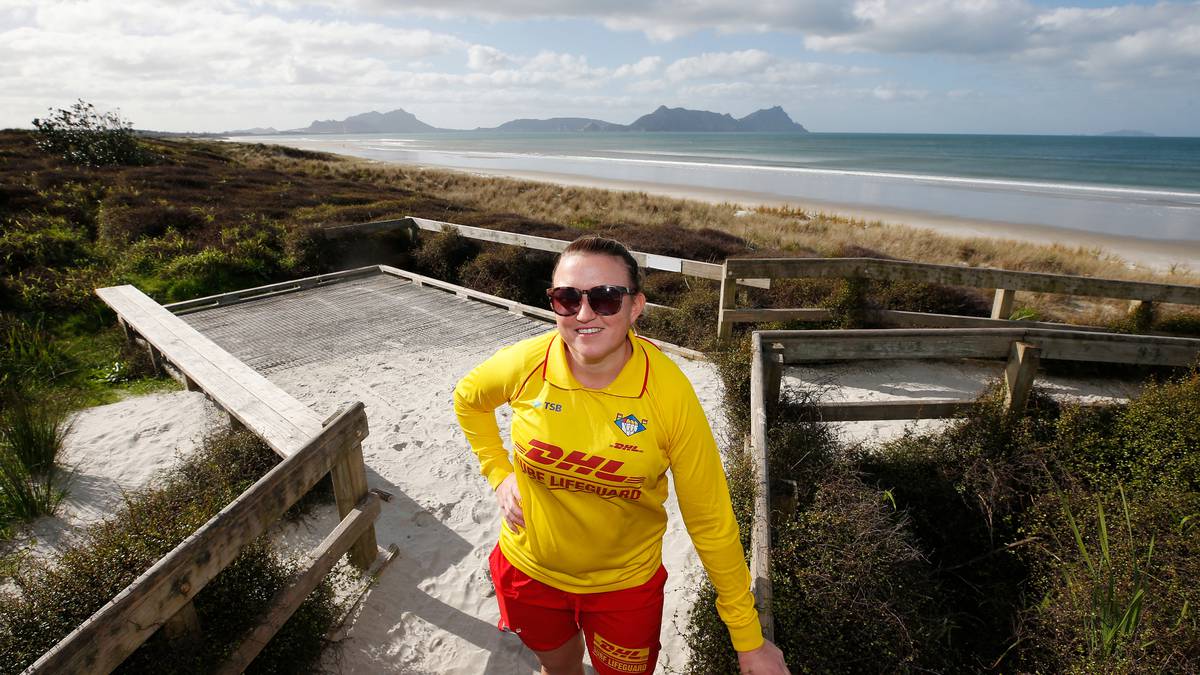Nicky Howes believes water safety should not only be taught in schools, given Northland’s high rate of drowning.
Photo / Michael Cunningham
All 10 of Northland’s drowning victims were male and half of those who died were over the age of 65, latest figures show.
According to Water Safety New Zealand, there were 10 preventable drownings in
the region last year and a further 18 people were hospitalised compared with nine fatalities and 19 hospitalisations the previous year.
It equates to 5.05 fatalities and 8.59 hospitalisations per 100,000 population.
A further two died this year, up until July 23.
The figures prompted an experienced surf lifeguard to say learning to swim and be safe in the water should not be limited only to schools.
Nicky Howes has been involved with the Whangārei Heads Surf Life Saving Club for 23 years said any drowning number higher than zero in Northland was high and it all came down to heeding simple instructions and advice.
The 10 preventable drownings reported last year in New Zealand represented 11 per cent of the New Zealand total of 90.
Since 2017, the highest number of drownings in Northland was recorded in 2019 when 16 people died and 17 ended up in hospital.
Howes said a lot of people were being complacent in a number of ways such as going for water activities in places where they were no lifeguards or outside their patrol hours.
/cloudfront-ap-southeast-2.images.arcpublishing.com/nzme/RXWS5SZNHAK2BEKXHKSOAM564U.jpg)
Photo / Michael Cunningham
Water Safety NZ said the beginning of summer and the move to fewer Covid restrictions saw 17 fatalities across the country, almost double the number recorded in December 2019.
“A lot of that will stop if people made better water safety decisions like not going in the water after hours and never swimming alone. Learning to swim shouldn’t be done just in schools,” Howes said.
“It’s also not just learning to swim but to be safe in the water. As New Zealanders, we pride ourselves on being an island nation but we’re not doing enough to make sure we are competent in the water.”
As a lifeguard, she has noticed families getting into the water outside the flags as they didn’t want to walk a few hundred metres to get close to where the lifeguards patrolled the beaches.
“Swimming outside the patrol times is another problem. It’s easy to do that in hot summers and a number of rescues have happened after hours when we were still at the club.”
Statistics show half of the 10 people who drowned last year were over 65, two were between the ages of 55 and 64, one was between 45 and 54, another between 25 and 34 and one up to the age of 4.
Four people drowned off beaches, two in rivers, two in harbours and the rest in marinas and “other waters”.
Of the 10, two people drowned while swimming, another two in a fall, while single drownings were recorded under unknown immersion incident, net fishing, rowing craft/dinghy, powered boat over 4m, snorkelling and boogie boarding.
Five drowning victims were Māori, four New Zealand European and one referred to as of “other ethnicity”.
Northland recorded 56 fatal drowning claims from ACC- the third most- for drowning deaths in New Zealand over the last 10 years.
February was the second most dangerous month for fatal drownings, and men were almost four times more likely to drown than women.




